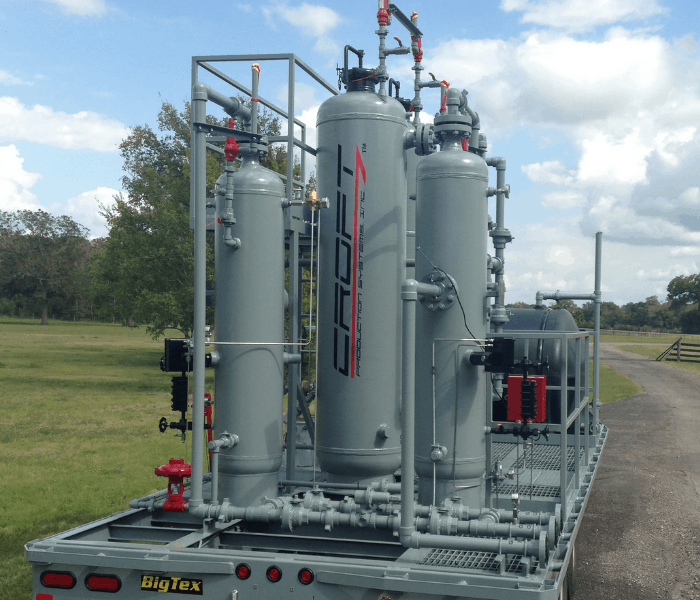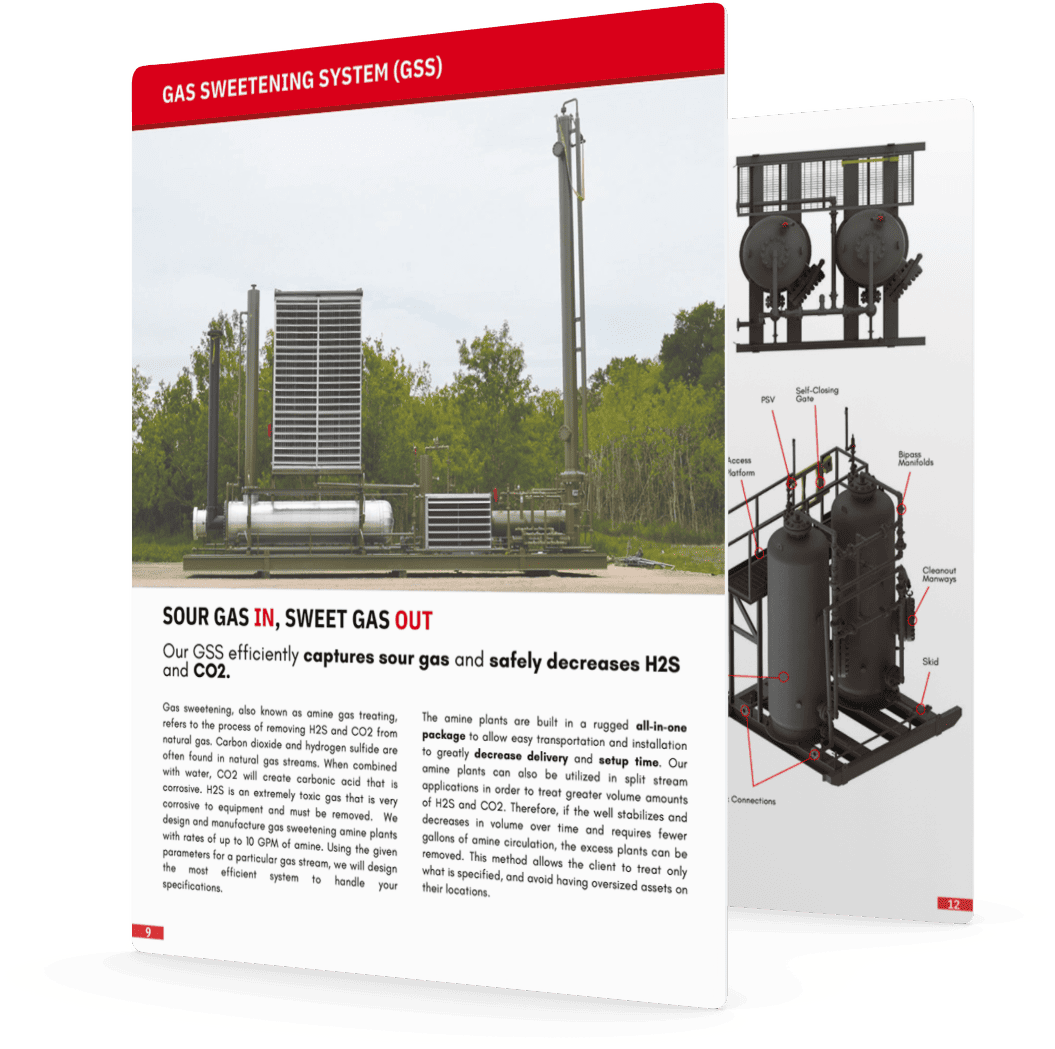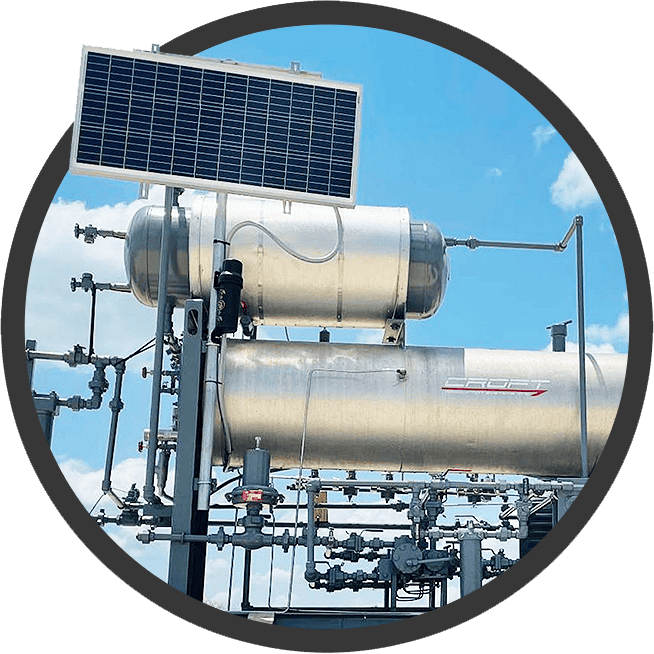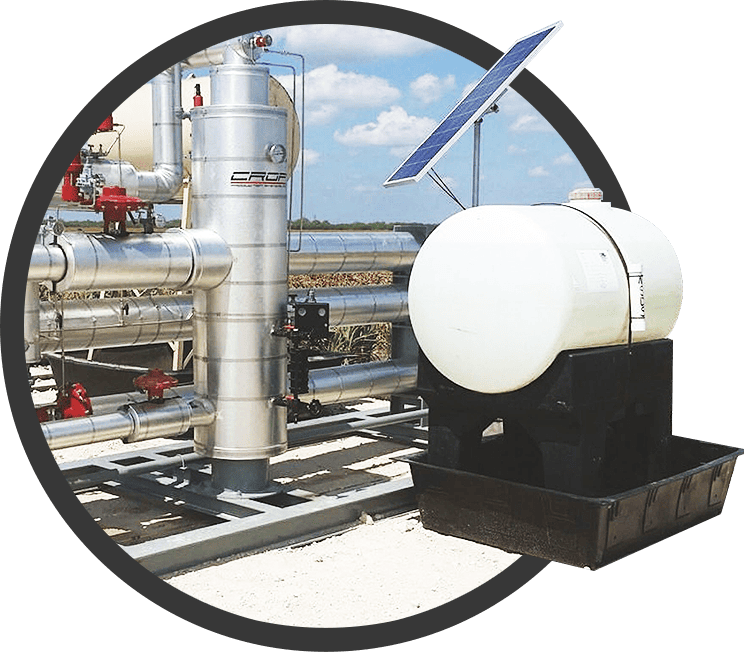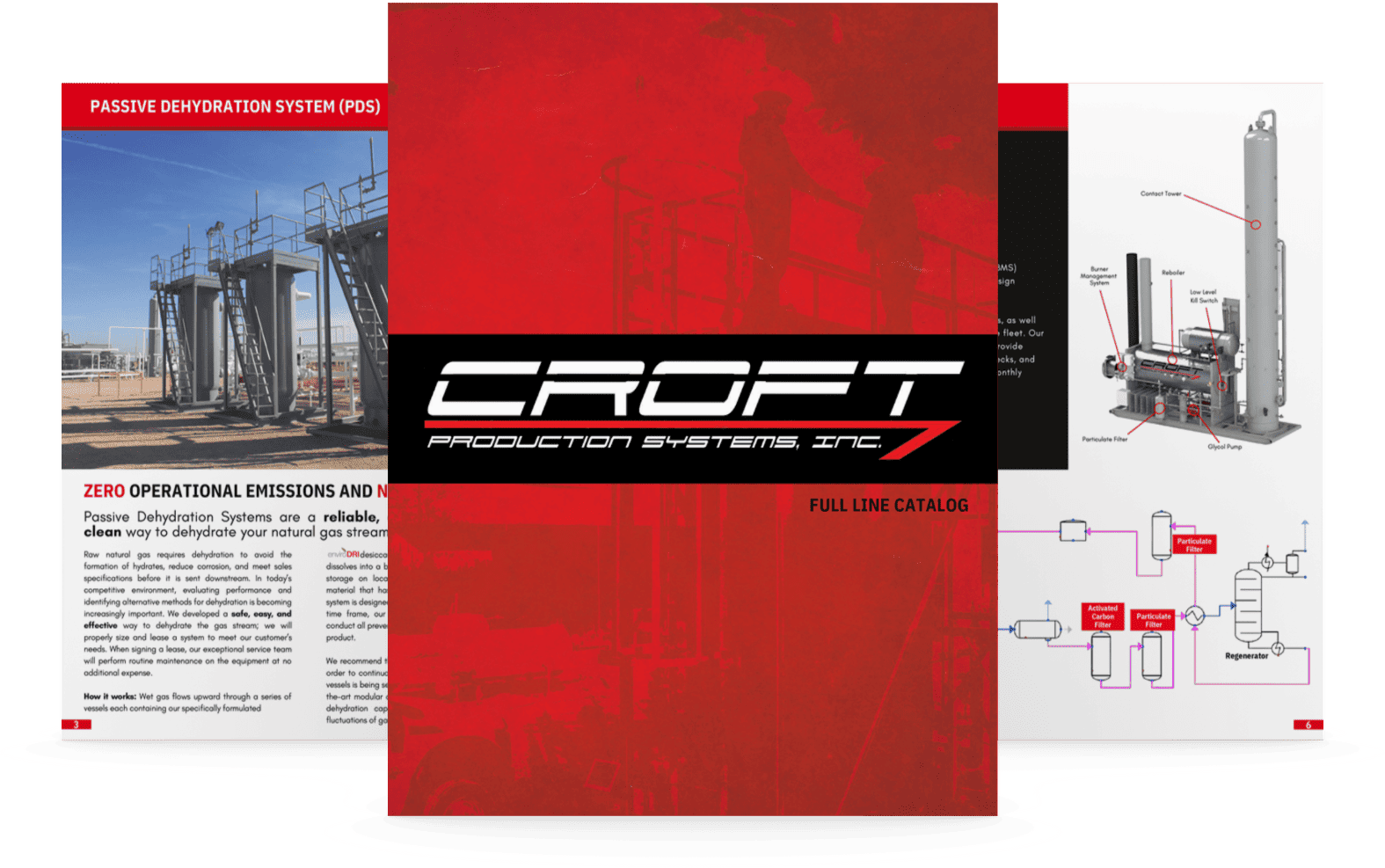
Diversified natural gas and oilfield equipment company that offers a full product and service portfolio of production/processing equipment, compressors, and a proprietary suite of emissions-free technology, all focused on delivering turnkey solutions.
ZERO OPERATIONAL EMISSIONS AND NO MOVING PARTS
Passive Dehydration Systems are a reliable, cost-effective, and clean way to dehydrate your natural gas streams
Raw natural gas requires dehydration to avoid the formation of hydrates, reduce corrosion, and meet sales specifications before it is sent downstream. In today’s competitive environment, evaluating performance and identifying alternative methods for dehydration is becoming increasingly important. We developed a safe, easy, and effective way to dehydrate the gas stream; we will properly size and lease a system to meet our customer’s needs. When signing a lease, our exceptional service team will perform routine maintenance on the equipment at no
additional expense.
